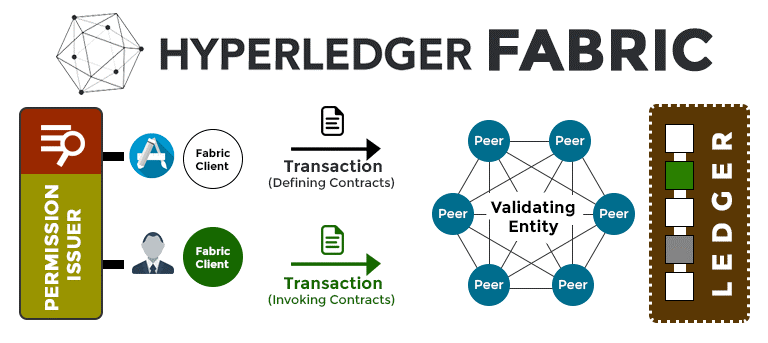Introduction to HyperLedger Fabric in Blockchain Network
Introduction to Hyperledger Fabric in Blockchain Network
Hyperledger Fabric is a permissioned blockchain framework that is designed to be scalable, flexible, and secure. It is one of the most popular blockchain frameworks in the world, and is used by a wide range of organizations, including IBM, Walmart, and Maersk.

In a Hyperledger Fabric blockchain network, there are four main types of nodes:
- Orderers: Orderers are responsible for ordering transactions and ensuring that they are processed in a secure and consistent manner.
- Peers: Peers store the blockchain ledger and can participate in the consensus process.
- Chaincode: Chaincode is the code that runs on the blockchain and implements the business logic of the network.
- Clients: Clients interact with the blockchain network through the use of APIs.
Hyperledger Fabric uses a unique approach to consensus called Solo, Kafka, Swarm, or Raft. This approach allows for high performance and scalability, while also ensuring that the network is secure.
Hyperledger Fabric also supports the use of channels. Channels are private blockchain networks that are created by a group of organizations. This allows organizations to share data and transactions with each other, while keeping it private from other organizations in the network.
Overall, Hyperledger Fabric is a powerful and versatile blockchain framework that can be used for a wide range of applications. It is well-suited for use in enterprise environments, where security and privacy are paramount.
Here are some of the benefits of using Hyperledger Fabric in a blockchain network:
- Scalability: Hyperledger Fabric is designed to be scalable, so it can be used to support large numbers of transactions and nodes.
- Flexibility: Hyperledger Fabric is a flexible framework, so it can be customized to meet the specific needs of different organizations.
- Security: Hyperledger Fabric is a secure framework, so it can be used to protect sensitive data.
- Privacy: Hyperledger Fabric supports the use of channels, which allow organizations to share data and transactions with each other, while keeping it private from other organizations in the network.
Here are some of the use cases of Hyperledger Fabric in blockchain networks:
- Supply chain management: Hyperledger Fabric can be used to track the movement of goods and products through a supply chain. This can help to ensure the authenticity and provenance of goods, and to prevent counterfeiting.
- Financial services: Hyperledger Fabric can be used to process financial transactions, such as payments and loans. This can help to improve efficiency and transparency in the financial industry.
- IoT: Hyperledger Fabric can be used to connect and secure IoT devices. This can help to collect and analyze data from IoT devices, and to prevent unauthorized access to data.
- Government: Hyperledger Fabric can be used to build government applications, such as e-voting and land registry systems. This can help to improve efficiency and transparency in government.
I hope this helps! Let me know if you have any other questions.

